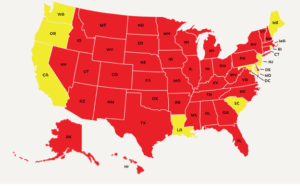Media Contact: Shane Austin,
[email protected]
202.425.2776
FOR IMMEDIATE RELEASE
Statement by Cathy Chase, President, Advocates for Highway and Auto Safety, on Child Passenger Safety Week
(September 12, 2024, Washington, DC) | Motor vehicle crashes remain one of the deadliest threats to children, claiming the lives of over 1,100 children aged 14 and younger in 2022 alone. Yet, every state has dangerous gaps in their child passenger safety laws, and new federal safety regulations are woefully overdue. From September 15 – 21, we observe Child Passenger Safety Week, an optimal time to advance effective measures to protect children on the roadways.
Note: This map is from our 2024 Roadmap to Safety report. The states in red have enacted 0 to one of the three optimal child passenger safety laws. Those in yellow have enacted at least two. A green color would signify the enactment of all three. As you can see, no state has passed all three. Since this report was released, Colorado, Michigan, Minnesota and Vermont have enacted additional child passenger safety laws that may change their rating in the upcoming 2025 edition to be released on Dec. 5, 2024.
According to the National Highway Traffic Safety Administration (NHTSA), nearly 40% of children who died in car crashes in 2022 were unrestrained. State governments play a pivotal role in addressing this urgent issue. Our annual Roadmap to Safety report rates each state on the adoption of 16 critical laws designed to reduce motor vehicle crashes, deaths and injuries, with three laws directly focused on child passenger safety. These laws are not merely recommendations—they are lifesaving actions grounded in research and crash data.
The first law mandates that infants and toddlers remain in a rear-facing seat until at least age two or until they exceed the seat’s maximum weight limit. The second law requires the use of booster seats for children who have outgrown their forward-facing car seat but are not yet ready to use the vehicle’s seatbelt alone—typically until they reach 57 inches in height and around the age of eight. The third law requires children 12 and younger to be properly restrained in a rear seat, which research shows is safest. Sadly, no state has enacted all three of these critical laws, and many states have yet to adopt even one.
We also urge Congress to take swift action on federal legislation to protect child passengers, including the Booster Seat Safety Act (H.R. 607) and the School Bus Safety Act (S. 2746). Additionally, numerous congressionally mandated actions should be completed without delay, including systems to detect and alert to unattended children, rear seat belt reminders, updates to seatback standards, side impact requirements for child restraint systems, strengthening crash testing standards related to child restraints and improving child Lower Anchors and Tethers for Children (LATCH) restraint systems. While some incremental progress has been made, we urge NHTSA to issue Final Rules with timely compliance dates on these safety improvements for children.
Our youngest and most vulnerable passengers cannot ensure their own safety. Our state and federal leaders must prioritize child safety on our roads by adopting these proven, life-saving laws and regulations.
The time to act is now. Every child must be protected from the dangers on our roadways.
###
About Advocates
Advocates for Highway and Auto Safety is an alliance of consumer, medical, public health, law enforcement and safety groups and insurance companies and agents working together to make America’s roads safer. Advocates’ mission is the adoption of federal and state laws, policies and programs that prevent motor vehicle crashes, save lives, reduce injuries, and contain costs.


